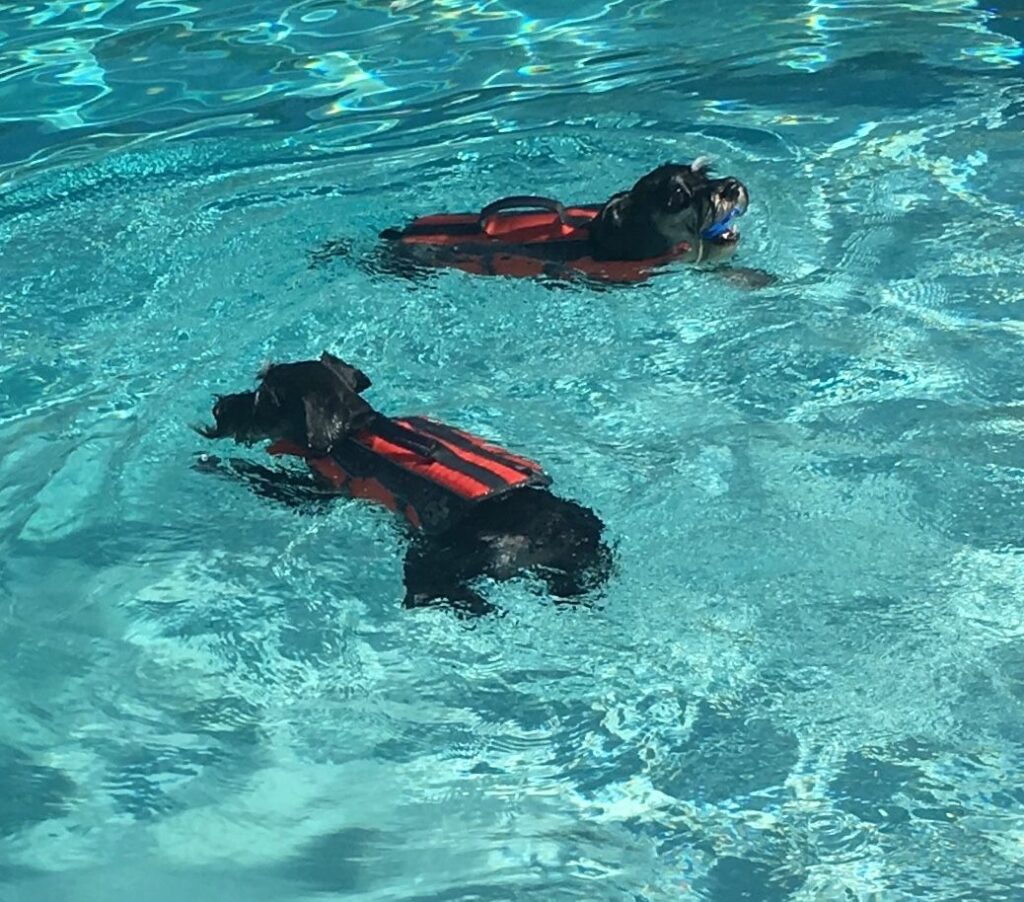Can Swimming Help Dogs With Joint Problems?
One of the main physical disorders which are responsible for the early demise of dogs is hip and joint problems. Over time the bone disorders worsen bringing in various secondary life-threatening ailments.
However, there are certain physical exercises that are indeed helpful for dogs suffering from joint-related problems.

Swimming is unanimously the best form of sporting activity that vets and dog experts can readily vouch for.
Why is swimming prescribed to dogs with joint and hip ailments?
Going back in history we can see that water exercises or hydrotherapy were highly recommended for greyhounds. These animals were constantly exposed to the hard surfaces while racing, so their bones and joints often developed injuries leading to arthritis or other joint problems. In those times effective alternatives like hip & joint supplements for dogs were not as easily available, so hydrotherapy in a warm water pool became a popular treatment method.
How effective is swimming in alleviating this condition?
When racing dogs run over hard and uneven surfaces, their lower body is subjected to trauma. Swimming, although it is a low impact exercise challenges dogs and helps them to keep their health in peak form. As you know, swimming is a non-weight bearing exercise and therefore it is comfortable and strengthens the body without putting it under too much stress. According to Tia Nelson, a veterinary Chiropractor of Montana, dogs that regularly practice swimming tend to hold their chiropractor adjustments longer than they did before starting swimming.
Can swimming be recommended to the dogs having other underlying ailments?
Swimming is considered to be an excellent form of exercise for dogs healing from surgery and injury. Also, dogs that are obese, geriatric, and arthritic can hugely benefit from swimming or hydrotherapy. Exercises are a great way of stimulating cardiovascular and lymphatic systems and increasing the overall flexibility of the body. Also, performing water exercise allows joints to move freely without causing any pain. It has been found in several instances before that dogs suffering from joint pain, bone fractures, hip, and elbow dysplasia, arthritics have shown major improvements, all thanks to swimming. But that’s not it, dogs’ diagnoses with neurological disorders resulting from stroke and accidents can also swim regularly to bring improvements naturally.
Dogs suffering from soft tissue injuries can also try out swimming, but these injuries will take time to heal, so owners are expected to wait for major improvements in their pets.
What can be done for dogs having hydrophobia?
Some dogs experience fear of being in the water and swimming in it, so guided swims can be arranged for them. Here the guide, who is a therapist have to try out various means to encourage the dogs to swim by offering utmost care and patience, till the dog can let go of its fears. Guided swims can also be best for dogs that would need the optimum benefit of swimming and cannot do it alone, like dogs that are heavily obese.
Although there have been no clinical trials to prove the effectiveness of swimming for dogs, multiple observations have hinted it to be successful in improving the overall health of dogs without making them do any strenuous exercises.